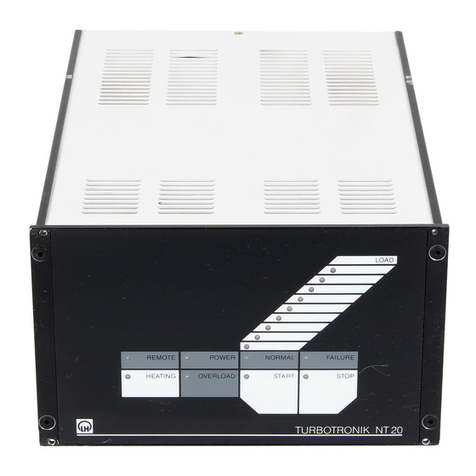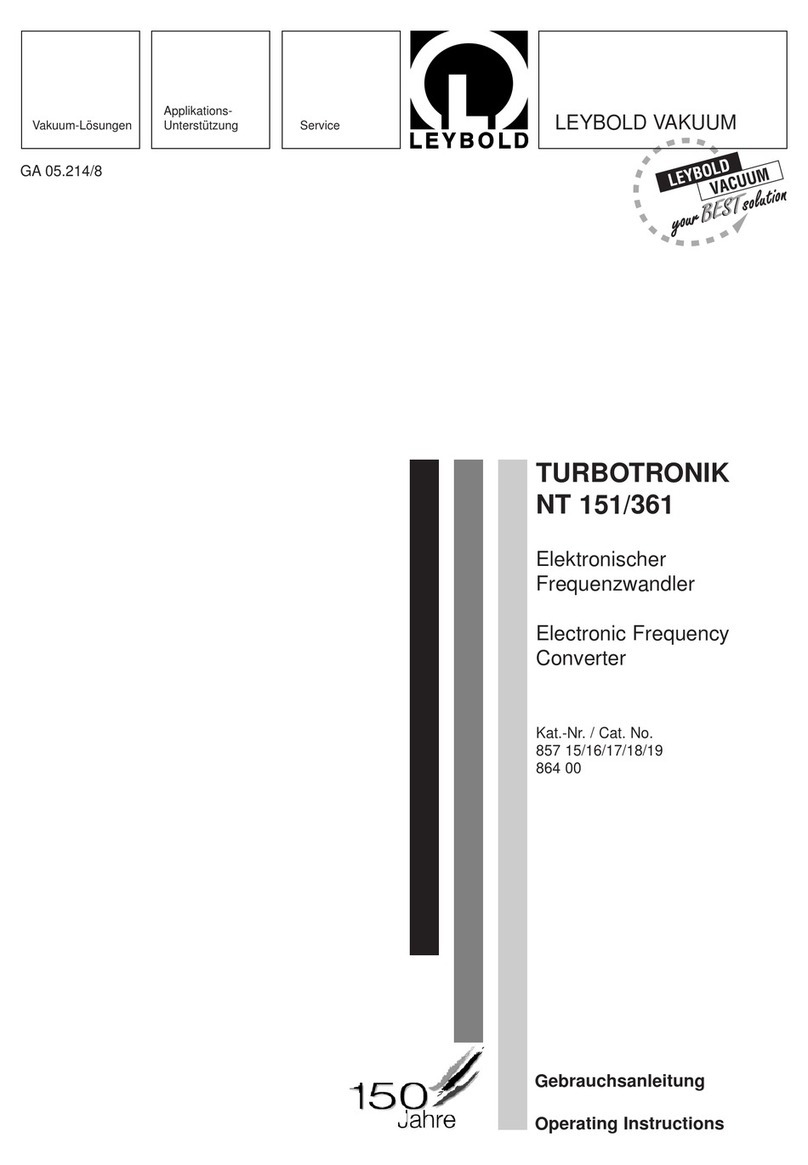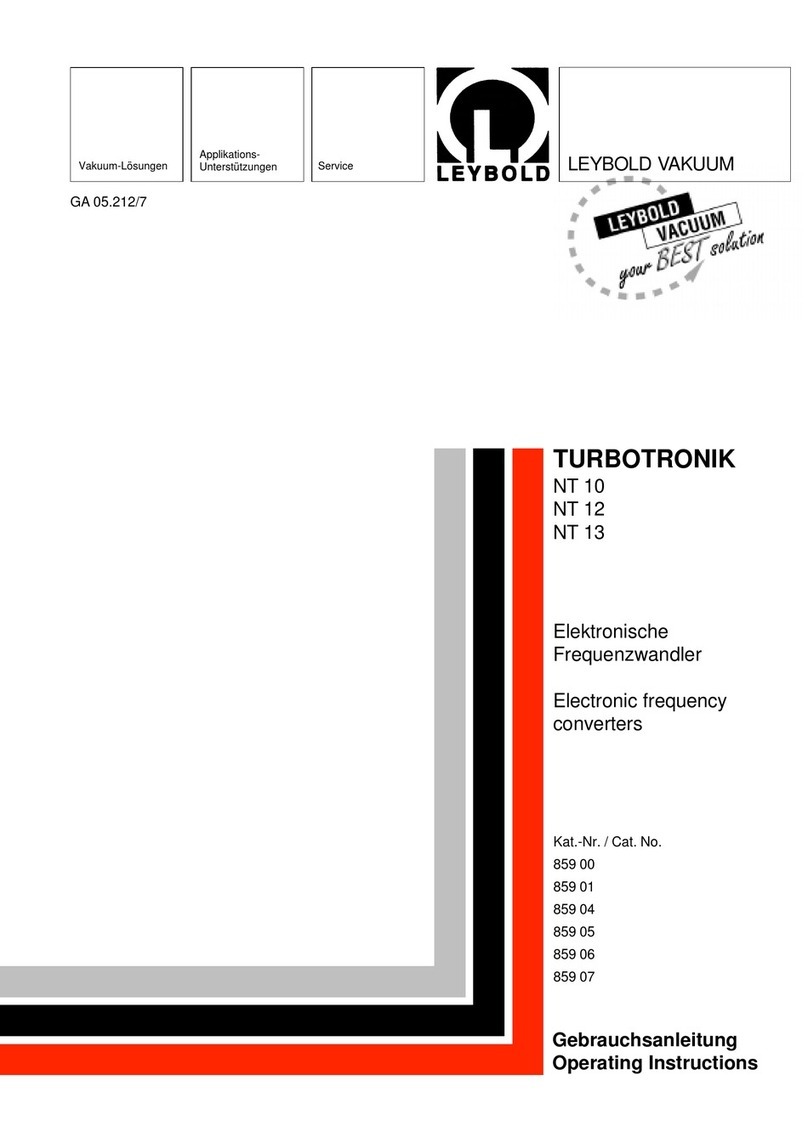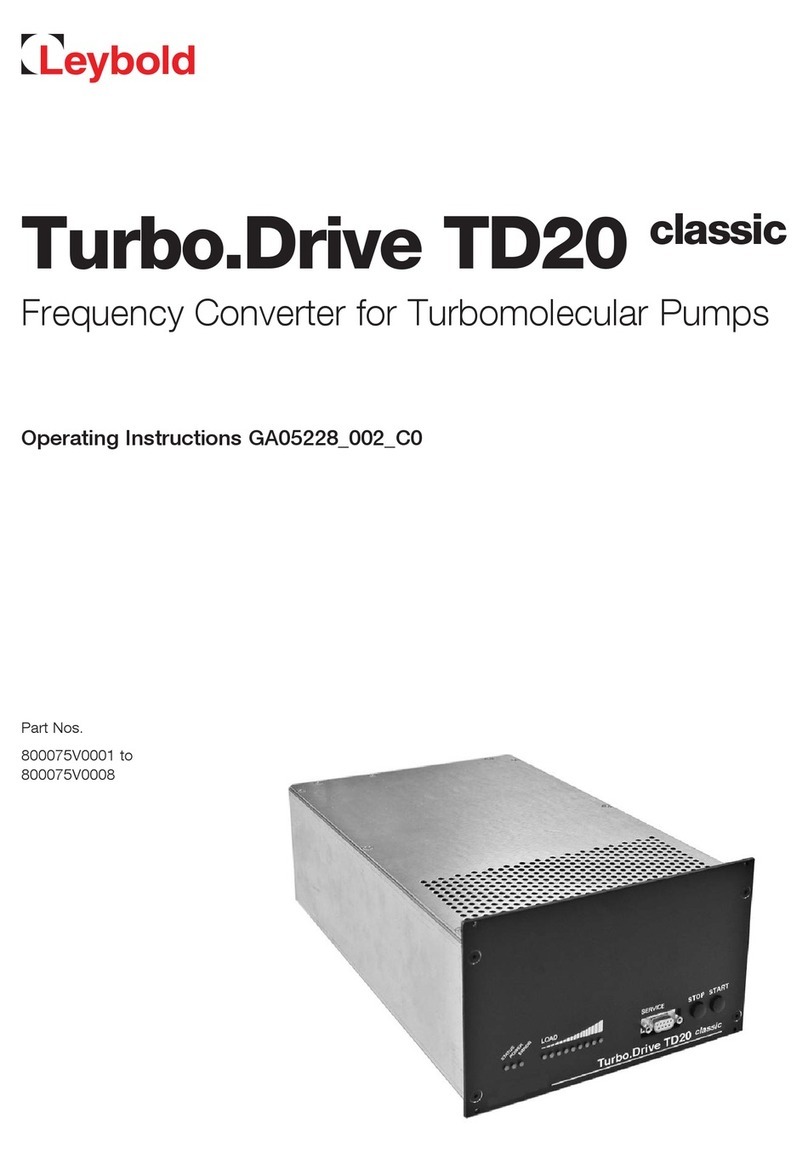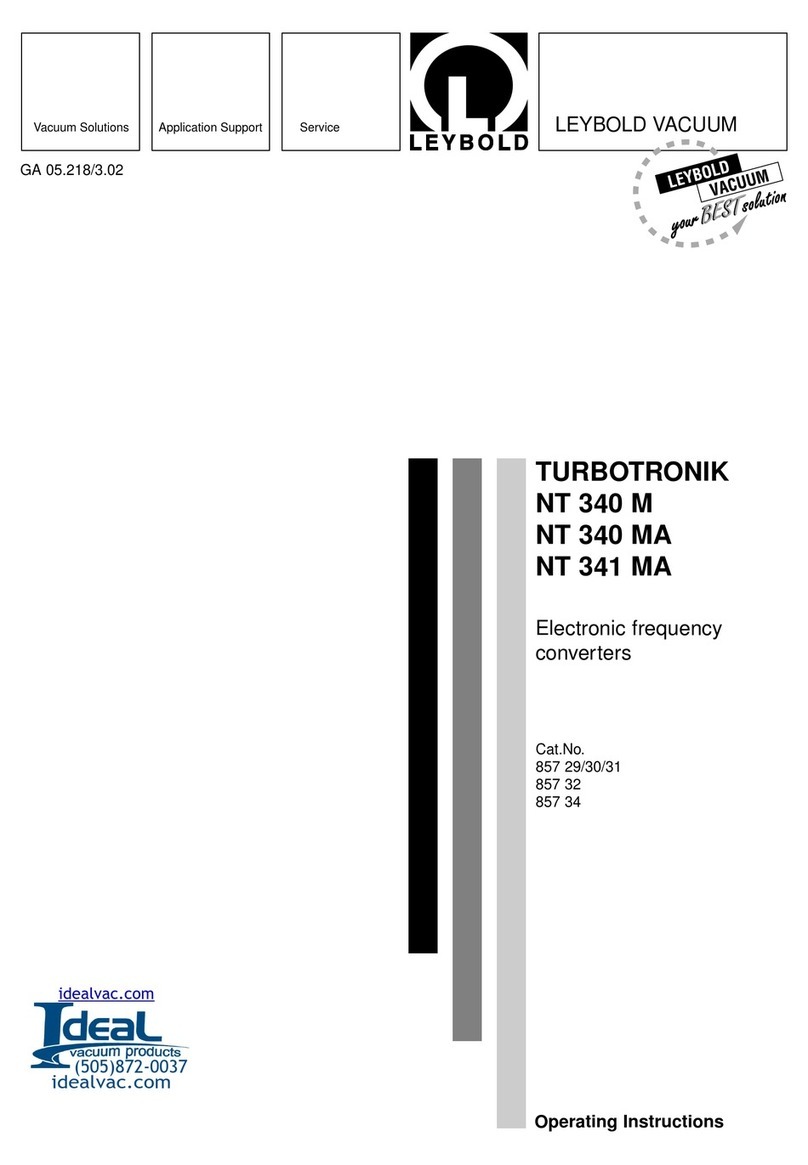
5
Motortemperatur zu hoch
Umrichtertemperatur zu hoch
Strom des Bremstransistors zu hoch
Strom im Inverter zu groß. Ansprechschwelle: Typ. 26 A
(min. 18 A)
Hilfsspannung des Inverters ausgefallen
Der Summenfehler bewirkt das sofortige Abschalten der
Zündimpulse mit anschließendem Öffnen der Hauprelais.
Der Fehler wird gespeichert bis das Gerät aus- und wieder
eingeschaltet wird. In jedem Fall muß zuerst die Fehlerursa-
che behoben werden.
bn+15V, –15V - LED: Bereitschaftsanzeige, die interne Versor-
gungsspannung der Elektronik liegt vor.
boÜberwachung der Zwischenkreisspannung sowie Treiber
mit galvanischer Trennung für den Choppertransistor. Die
Zwischenkreisspannung wird ständig mit zwei Grenzwerten
verglichen. Bei Überschreiten der 1. Schwelle von ca. 355 V
wird der Choppertransistor eingeschaltet.Dadurch sinkt nor-
malerweise die Spannung ab, bis bei ca. 350 V der Chop-
pertransistor wieder ausschaltet. Denkbar ist jedoch, daß
die Spannung weiter steigt obwohl der Choppertransistor
durchgeschaltet hat. Dies kann bei dem Versuch passieren
eine Maschine schnell abzubremsen ohne zusätzlichen ex-
ternen Bremswiderstand.Dann kann die Bremsenergie nicht
in ausreichender Menge abgeführt werden und die Span-
nung steigt weiter. Bei Überschreiten der 2. Schwelle bei
375 V wird dann der Inverter abgeschaltet, damit der Brems-
vorgang unterbrochen und Bremszeit verlängert.So wird ein
weiterer Anstieg der Zwischenkreisspannung verhindert.
Der Choppertransistor kann auch über die Schnittstelle mit
CHOPI eingeschaltet werden.
Der Schaltzustand kann an der Schnittstelle an CHOPO ge-
messen werden.
bpSechs Treiber mit galvanischer Trennung zur Ansteuerung
der Leistungstransistoren. Jeder der sechs Leistungstransi-
storen kann mit den zugehörigen Steuersignalen PH1/
1...PH3/2 ein- und ausgeschaltet werden. Dabei verhindert
eine Verriegelungslogik, daß die in einem Zweigpaar be-
findlichen Transistoren gleichzeitig durchgeschaltet werden.
Dies ist notwendig, da sonst der Zwischenkreiskondensator
kurzgeschlossen und damit die Transistoren zerstört wür-
den.
Der Schaltzustand jedes einzelnen Transistors kann an den
LEDs co erkannt werden.
brAnschluß des Temperaturwächters der Maschine. Ein offe-
ner Kontakt signalisiert Übertemperatur und führt einen
Summenfehler und damit eine Abschaltung des Umrichters
herbei. Die Übertemperatur wird durch die JM-LED bl ange-
zeigt, der Summenfehler durch die IERR-LED bm. Die Ab-
schaltung bewirkt, daß sich die angeschlossene Maschine
abkühlen kann und führt damit das erneute Schließen des
Temperaturkontaktes herbei.
Die JM-LEDbl erlischt wieder,aber nicht der Summenfehler.
Damit ist sichergestellt, daß die Maschine nicht nach einiger
Zeit selbsttätig wieder anläuft.
Wird eine passive Last ohne Temperaturwächter verwendet,
so kann dieser Kontakt einfach kurzgeschlossen werden.
bsStrommessung: An den drei Ausgängen des Umrichters
können je nach Anwendung Rechteck-Ströme fließen mit ei-
ner Frequenz bis hinauf zu 20 kHz. Andererseits ist jedoch
auch ein reiner Gleichstrom vorstellbar. Um solche Ströme
hinreichend genau zu messen und zusätzlich auch noch
eine galvanische Trennung von dem zu messenden Strom
zu gewährleisten, werden diese mit Kompensations- Strom-
Motor temperature is too high
Converter temperature is too high
Current of the brake transistor is too high
Current in the inverter is too high. Trigger threshold: Type
26 A (min. 18 A)
Auxiliary voltage of the inverter has failed
The common error causes the immediate switch-off of the
trigger pulse with subsequent opening of the main relays.
The error is stored until the device is switched off and on
again.In any case the cause of the error must first be elimi-
nated before continuing.
bn+15V, –15V - LED: indicates readiness, there is an internal
supply voltage for the electronic circuitry present.
boMonitoring device for the link voltage as well as the driver
with electronic isolation for the chopper transistor. The link
voltage is continuously compared with two critical values.
When the first threshold of approx. 355 V is exceeded, the
chopper transistor is switched on. This normally causes the
voltage to decrease until the chopper transistor switches off
again at approx. 350 V. It is conceivable that the voltage
continues to increase although the chopper transistor has
switched through. This can occur when attempting to rapid-
ly brake the machine without an additional external brake
resistor. Then the braking energy cannot be dissipated in
sufficient amounts and the voltage continues to increase
further. When the second threshold at 375 V is exceeded
then the inverter is switched off in order to interrupt the
braking process and prolong the braking time. This prevents
a further increase in the link voltage.
The chopper transistor can also be switched on with CHOPI
via the interface.
The switching status can be measured at the interface at
CHOPO.
bpSix drivers with galvanic isolation for controlling the power
transistors. Each of the six power transistors can be
switched on and off with the appropriate control signals
PH1/1...PH3/2. Here an interlocking logic element prevents
the transistors in a branch pair from both switching through
simultaneously. This is necessary as otherwise the link ca-
pacitors would short-circuit and thus cause the destruction
of the transistors.
The switching status of each individual transistor can be
recognized at the LEDs co.
brConnection of the thermostat of the machine. An open con-
tact signals excess temperature and brings about the sig-
nalling of a common error and thus the switch-off of the
converter. The excess temperature is indicated by the JM
LED bl, the common error is indicated by the IERR LED
bm. Switch-off enables the connected machine to cool off
and to the eventual renewed closing of the temperature
contact.
The JMLED bl goes out again but not the LED assigned to
indicate a general error. This ensures that the machine can
start up again automatically after a certain time period has
elapsed.
If a passive load without a thermostat is used, then this
contact can simply be short-circuited.
bsCurrent measurement: Depending on the application,
square-wave currents can flow with a frequency of up to
20 kHz at the three outputs of the frequency converter. But,
on the other hand, a pure DC current is possible. In order to
be able to measure such currents with sufficient accuracy
and also to be able to guarantee electronic isolation for the
current to be measured, these currents are detected with












